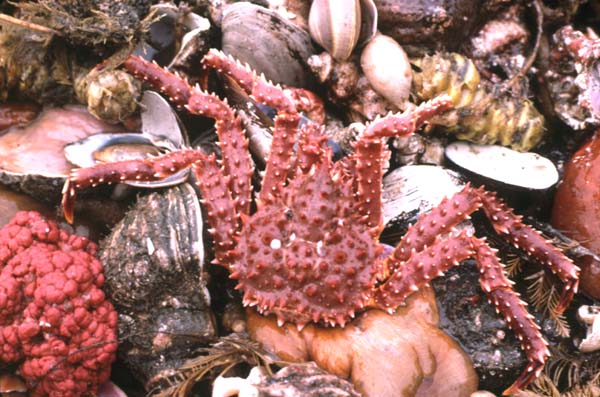The soft-bottom environment in Bristol Bay supports a great variety of invertebrate organism that live on and in the sandy seabed. Approximately 150 different species were collected with trawls and grab samplers, including starfish, crabs, snails, worms, corals, sponges, anemones, bryozoans, clams and other animals so small that a microscope is required to identify them. The distribution and abundance of these animals is strongly related to physical properties of the seabed, such as the size of sediment particles. An ability to map these properties using cost-effective “remote sensing” technology like the side scan sonar would help scientists identify areas of particular importance and protect them when necessary. These “benthic communities” of bottom-dwelling invertebrates represent the foundation for one of the most productive bodies of water on the planet, with over 450 species of fish, 50 species of seabirds and 25 species of marine mammals found in the Bering Sea. They also provide essential habitat and food to support extremely valuable commercial bottom fisheries. Image courtesy of Next Generation Tools 2001, NOAA-OER.
NOTICE: This page is being retained for reference purposes only and is no longer being updated or maintained.


